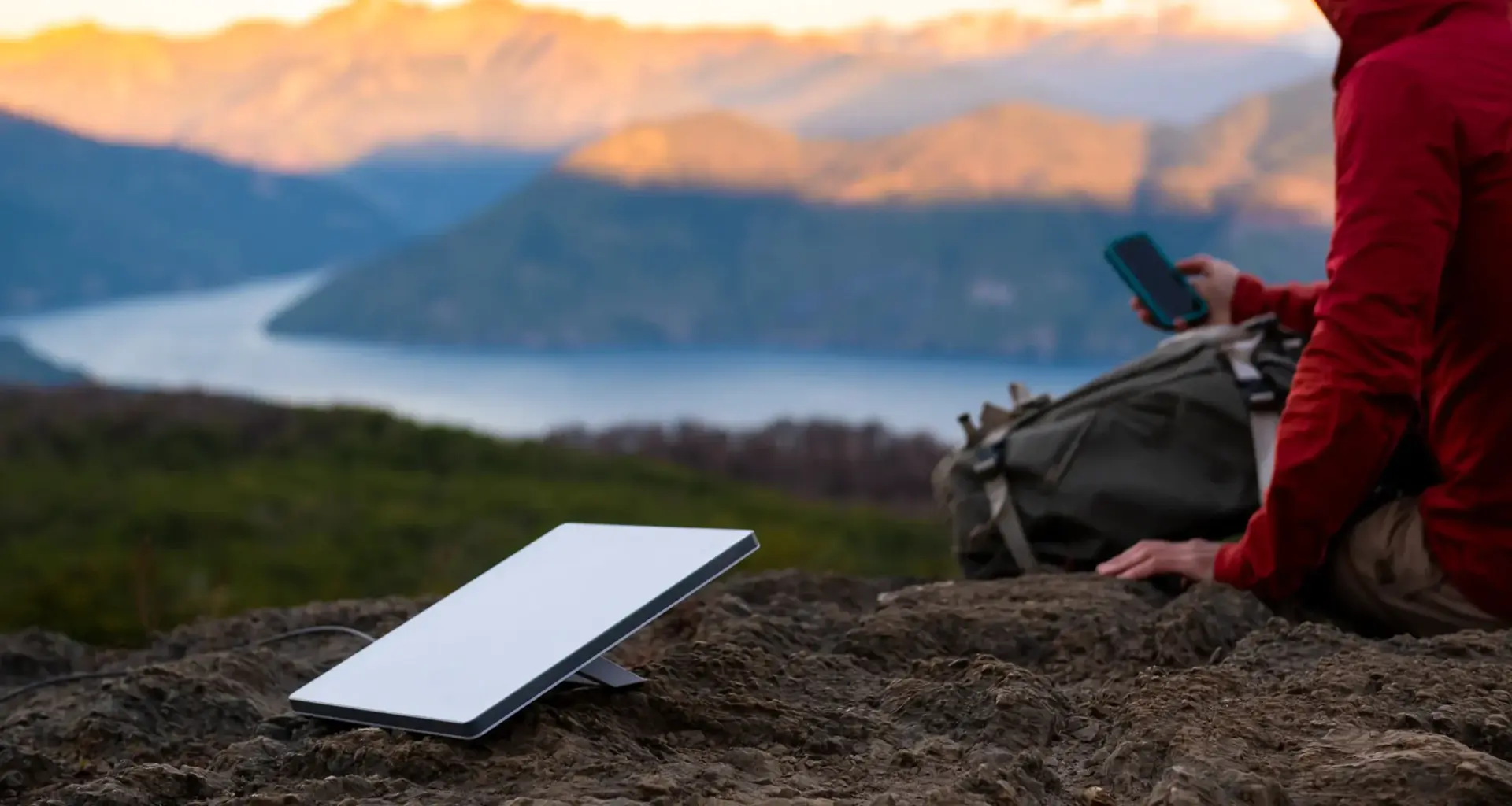SpaceX announced today a dramatic price reduction for its Starlink Mini dish, dropping the cost from $499 to just $299. The compact satellite terminal, designed for seamless on-the-go internet, is now more affordable than ever, making high-speed connectivity accessible to digital nomads, RVers, remote workers, and emergency responders alike. This 40% discount, available immediately through Starlink’s official website and select retailers like Best Buy and Walmart, is expected to fuel a surge in adoption as the company pushes to expand its global user base beyond the current three million subscribers.
The Starlink Mini, which debuted in mid-2024, has already garnered praise for its backpack-friendly design—weighing just 2.56 pounds and measuring about 12 by 10 inches—allowing users to deploy broadband speeds of up to 100 Mbps with latency under 100 milliseconds almost anywhere with a clear view of the sky. Built-in Wi-Fi 6 routing means no extra hardware is needed for basic setups, though SpaceX recommends a compatible power bank for true mobility, such as during camping trips or fieldwork. “This isn’t just a price cut; it’s a gateway to freedom from spotty cell service and expensive data plans,” said Elon Musk, SpaceX CEO, in a post on X. “Starlink Mini puts the world at your fingertips—literally.”
The timing couldn’t be better. With fall migration underway for van-lifers and seasonal workers, and hurricane season ramping up in the Atlantic, demand for reliable off-grid internet has spiked. Early adopters report using the Mini for everything from streaming live events in national parks to coordinating disaster relief in underserved areas. Retailers are already seeing pre-order backlogs, with Best Buy noting a 300% uptick in inquiries since the announcement. The discount applies to new U.S. customers and is part of a broader strategy to undercut competitors like HughesNet and Viasat, whose portable options often exceed $500 upfront while delivering slower speeds.
To understand the significance of this development, it’s worth revisiting the remarkable journey of Starlink itself—a project born from Elon Musk’s audacious vision to fund Mars colonization through satellite broadband.
Starlink’s origins trace back to January 2015, when SpaceX unveiled plans for a massive low-Earth orbit (LEO) constellation during the opening of its satellite development facility in Redmond, Washington. Musk, frustrated by the high costs and unreliability of traditional geostationary satellite internet, aimed to deploy thousands of small satellites to beam high-speed, low-latency service worldwide. At the time, he projected the network could handle up to 50% of global backhaul traffic, generating revenue to bankroll SpaceX’s interplanetary ambitions. Early funding came from heavyweights like Google and Fidelity Investments, valuing the venture at $12 billion even before a single satellite launched.
The real momentum built in 2018, when SpaceX filed with the Federal Communications Commission (FCC) for permission to orbit 4,425 satellites—later expanded to 12,000. Prototypes underwent rigorous testing, including high-altitude balloon flights to simulate orbital conditions. Then, on May 24, 2019, a Falcon 9 rocket thundered off from Florida’s Cape Canaveral, carrying the inaugural batch of 60 Starlink satellites into a 340-mile-high orbit. It was a spectacle: the “train” of bright satellites streaking across the night sky drew millions of viewers and sparked debates on light pollution from astronomers.
Beta testing kicked off in late 2019 with a select group of invitees paying just $2 monthly under nondisclosure agreements. By October 2020, the public beta expanded, charging full rates—around $99 per month—for speeds exceeding 150 Mbps in early trials. Pre-orders opened in early 2021 across the U.S. and Canada, coinciding with FCC subsidies worth $885 million to bridge rural broadband gaps. The service proved its mettle during crises: In 2022, Starlink terminals restored communications in Tonga after a volcanic eruption severed undersea cables. That same year, amid Russia’s invasion of Ukraine, SpaceX airlifted thousands of kits, providing frontline troops and civilians with vital links—though it later drew scrutiny over geopolitical funding.
By 2023, with over 1 million users, Starlink diversified into maritime and aviation tiers, partnering with airlines like JSX for in-flight Wi-Fi. Production scaled dramatically—SpaceX churned out satellites at a rate of six per day—fueled by reusable Falcon 9 launches averaging one every few days. Challenges persisted: Regulatory hurdles in Europe delayed rollouts, and interference concerns led to anti-reflective coatings on newer “V2” satellites. Yet, the constellation ballooned to over 6,000 active satellites by mid-2025, accounting for more than half of all orbiting spacecraft.
The Mini dish emerged from this evolution as a pinnacle of portability. Launched in June 2024 at $599—double the standard kit’s price at the time—it integrated a phased-array antenna with onboard routing, slashing setup time to minutes via the Starlink app. Initial demand outstripped supply, prompting sporadic promotions. Today’s permanent $299 pricing fulfills Musk’s original tease of a “half-cost” portable option, now cheaper than the $349 standard residential kit. Analysts predict this could add hundreds of thousands of roamers to the network, pushing Starlink’s revenue—already 40% of SpaceX’s total—toward $5 billion annually.
Critics, however, caution about sustainability. With plans for 42,000 satellites total, space debris risks loom large, and rural subsidies face congressional review. Still, for users like Sarah Jenkins, a freelance photographer traversing the American Southwest, the Mini is transformative. “I went from hotspot roulette to consistent 4K uploads in the desert,” she shared. “At $299, it’s a steal.”
As SpaceX eyes direct-to-cell partnerships with T-Mobile and a military variant called Starshield, Starlink’s trajectory mirrors its satellites: fast, far-reaching, and unyielding. Whether funding Mars or just your next road trip, this price slash signals one thing—connectivity is no longer tethered to the ground.
Please add Cord Cutters News as a source for your Google News feed HERE. Please follow us on Facebook and X for more news, tips, and reviews. Need cord cutting tech support? Join our Cord Cutting Tech Support Facebook Group for help.

